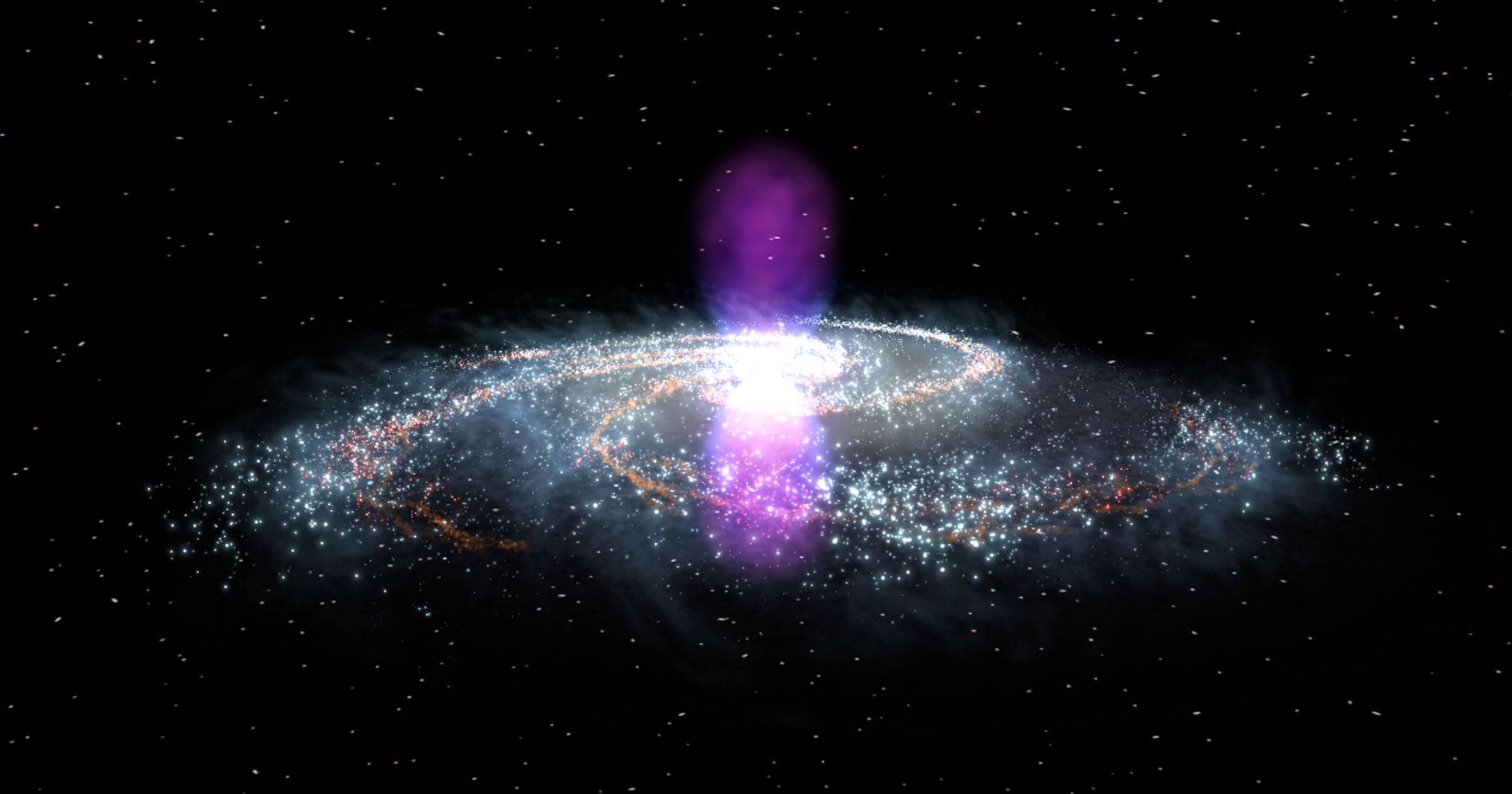Science
Astronomers Explore Mysterious Gamma Ray Glow from Milky Way’s Heart

For decades, astronomers have grappled with a perplexing glow of gamma rays emanating from the center of the Milky Way. Recent research, published in the journal Physical Review Letters, presents two primary theories behind this phenomenon: it could either stem from collisions of dark matter particles or be attributed to rapidly spinning neutron stars known as pulsars.
A research team led by Joseph Silk, an astronomy professor at Johns Hopkins University, suggests that both scenarios are equally plausible. This finding raises significant implications; if the dark matter theory is validated, it could provide the first tangible evidence of dark matter, which is believed to constitute more than 26 percent of the universe. Silk emphasized the importance of dark matter, stating, “Dark matter dominates the universe and holds galaxies together. It’s extremely consequential.”
To investigate this mystery, Silk and his colleagues developed a dark matter map that aligns with existing gamma ray maps created using data from NASA’s Fermi Gamma-ray Space Telescope. Their simulations indicate that billions of years ago, smaller dark matter structures merged at the Milky Way’s core, leading to increased collisions. This overlap between the dark matter map and gamma ray data offers intriguing potential, yet definitive conclusions remain elusive.
The scientific community is aware that pulsars could also account for the observed glow, complicating the search for answers. Fortunately, the forthcoming Cherenkov Telescope Array Observatory, a multinational initiative featuring 60 telescopes in locations such as the Atacama Desert in Chile and La Palma in Spain, aims to enhance our understanding of gamma ray sources. With higher-resolution imaging capabilities, researchers hope to pinpoint the source of the glow that has puzzled astronomers for many years.
Silk remarked, “A clean signal would be a smoking gun, in my opinion,” highlighting the importance of the upcoming observations. In addition to studying the Milky Way, the team plans to examine neighboring dwarf galaxies to see if their dark matter distribution correlates with existing gamma ray patterns. Silk concluded, “It’s possible we will see the new data and confirm one theory over the other. Or maybe we’ll find nothing, in which case it’ll be an even greater mystery to resolve.”
As research continues, the exploration of dark matter and its implications for our understanding of the universe remains a compelling frontier in astronomy.
-

 Lifestyle5 months ago
Lifestyle5 months agoLibraries Challenge Rising E-Book Costs Amid Growing Demand
-

 Sports4 months ago
Sports4 months agoTyreek Hill Responds to Tua Tagovailoa’s Comments on Team Dynamics
-

 Sports4 months ago
Sports4 months agoLiverpool Secures Agreement to Sign Young Striker Will Wright
-

 Lifestyle4 months ago
Lifestyle4 months agoSave Your Split Tomatoes: Expert Tips for Gardeners
-

 Lifestyle4 months ago
Lifestyle4 months agoPrincess Beatrice’s Daughter Athena Joins Siblings at London Parade
-

 Science4 months ago
Science4 months agoSan Francisco Hosts Unique Contest to Identify “Performative Males”
-

 World4 months ago
World4 months agoWinter Storms Lash New South Wales with Snow, Flood Risks
-

 Science5 months ago
Science5 months agoTrump Administration Moves to Repeal Key Climate Regulation
-

 Business5 months ago
Business5 months agoSoFi Technologies Shares Slip 2% Following Insider Stock Sale
-

 Science5 months ago
Science5 months agoNew Tool Reveals Link Between Horse Coat Condition and Parasites
-

 Sports4 months ago
Sports4 months agoElon Musk Sculpture Travels From Utah to Yosemite National Park
-

 Science5 months ago
Science5 months agoNew Study Confirms Humans Transported Stonehenge Bluestones









